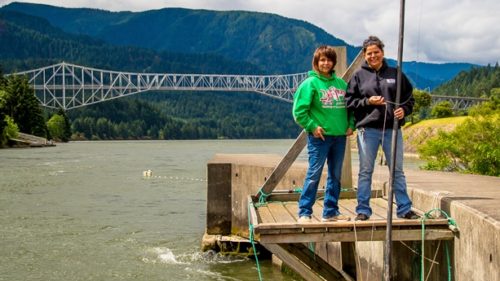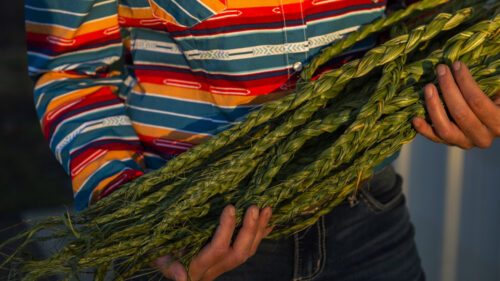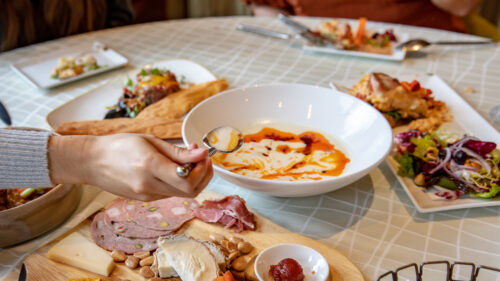One of Oregon’s finest heritage foods, salmon is prized for its taste and versatility, with a rich flavor and firm texture that holds up to everything from grilling to sushi. It’s full of protein, omega-3 fatty acids, vitamins and minerals, too. This wild, ancient fish follows a cycle etched in the eons: Born in rivers like the Columbia, salmon instinctively head downstream to the Pacific, spending most of their lives in the ocean before returning to their home rivers to spawn.
Humans have lived in tandem with the salmon’s life cycle for thousands of years. Impressive runs of thousands of salmon returning to the Columbia each year enabled Native cultures to thrive, providing ample sustenance and a valuable resource for trade. Like their ancestors, four Columbia River tribes — the Nez Perce, Umatilla, Warm Springs and Yakama — continue the time-honored practice of the salmon harvest to provide for their people and trade with others. The Columbia Gorge is one of the only places in the Northwest where the public can buy directly from tribal fishers — a great way to enjoy fresh, reasonably priced salmon and support men and women pursuing their traditional livelihood.
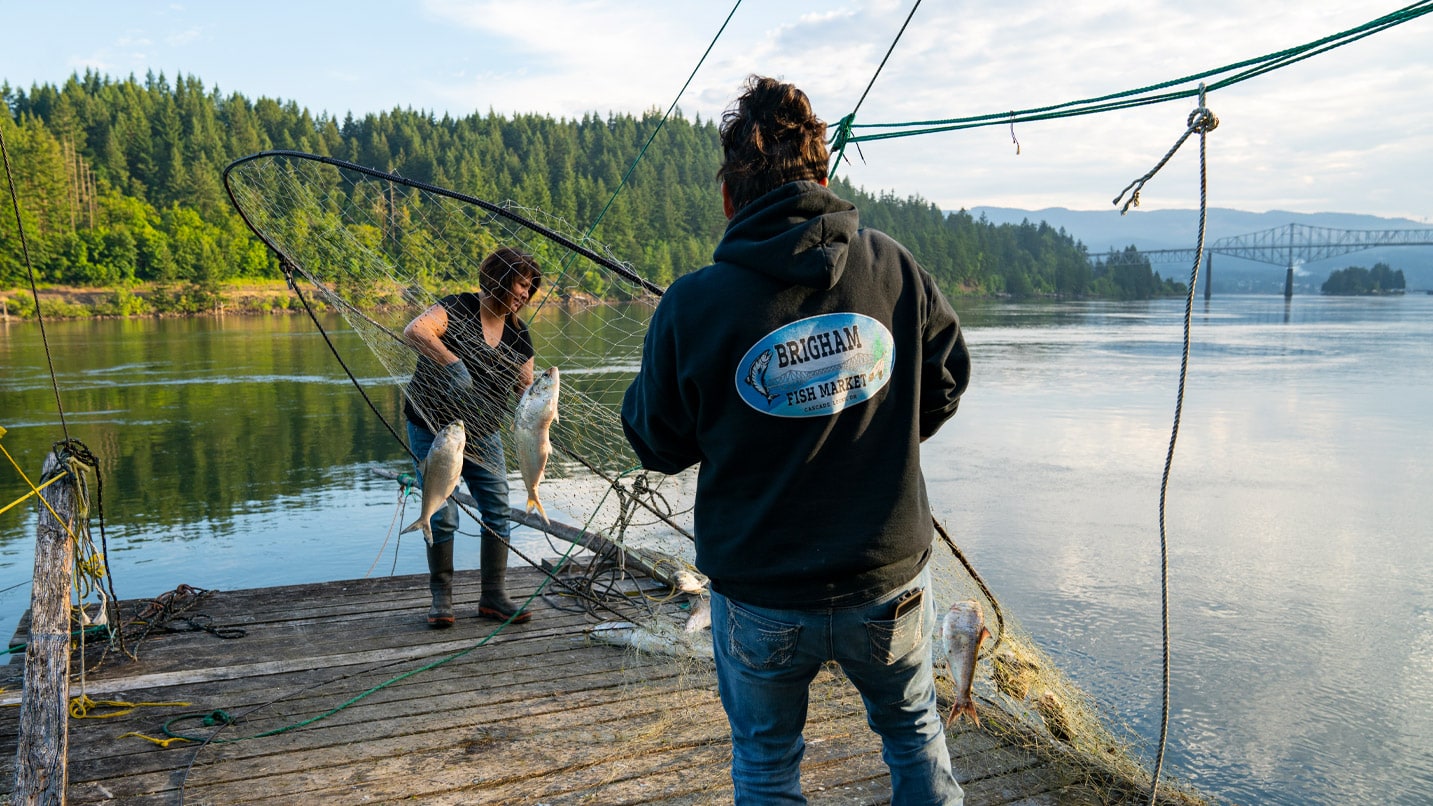
The Significance of Salmon
It’s nearly impossible to overstate the role of salmon for Pacific Northwest tribes, which refer to themselves as Wy-Kan-Ush-Pum (“salmon people”). “It is our creation story,” explains Buck Jones — a Cayuse Indians tribal member (a band of the Confederated Tribes of the Umatilla Indian Reservation) and salmon marketing director of the Columbia River Inter-Tribal Fish Commission. “As salmon gave up his life for us, it is our role to be stewards of the land and the water so he can return.” Longhouse ceremonies honor the return of the salmon upriver each spring, and fishing remains integral to Columbia River tribal culture.
Treaties between Columbia River tribes and the federal government preserve the sovereign rights for tribal families to fish in their “usual and accustomed places.” Jones explains: “We gave up a lot of our land, but our elders had the fortitude to not give up our traditional fishing rights.” Today Native fishers continue to practice dip-net fishing from platforms over the Columbia and its tributaries, along with more contemporary methods of setting nets or using drift nets behind boats.
The tribes manage the fishery in the Columbia River Gorge. They establish the fishing seasons and standards to maintain a sustainable harvest, and augment generations of tribal knowledge with food-science programs to ensure optimal handling and food safety. As a result, says Jones, Columbia River salmon is among the finest salmon you’ll find anywhere.
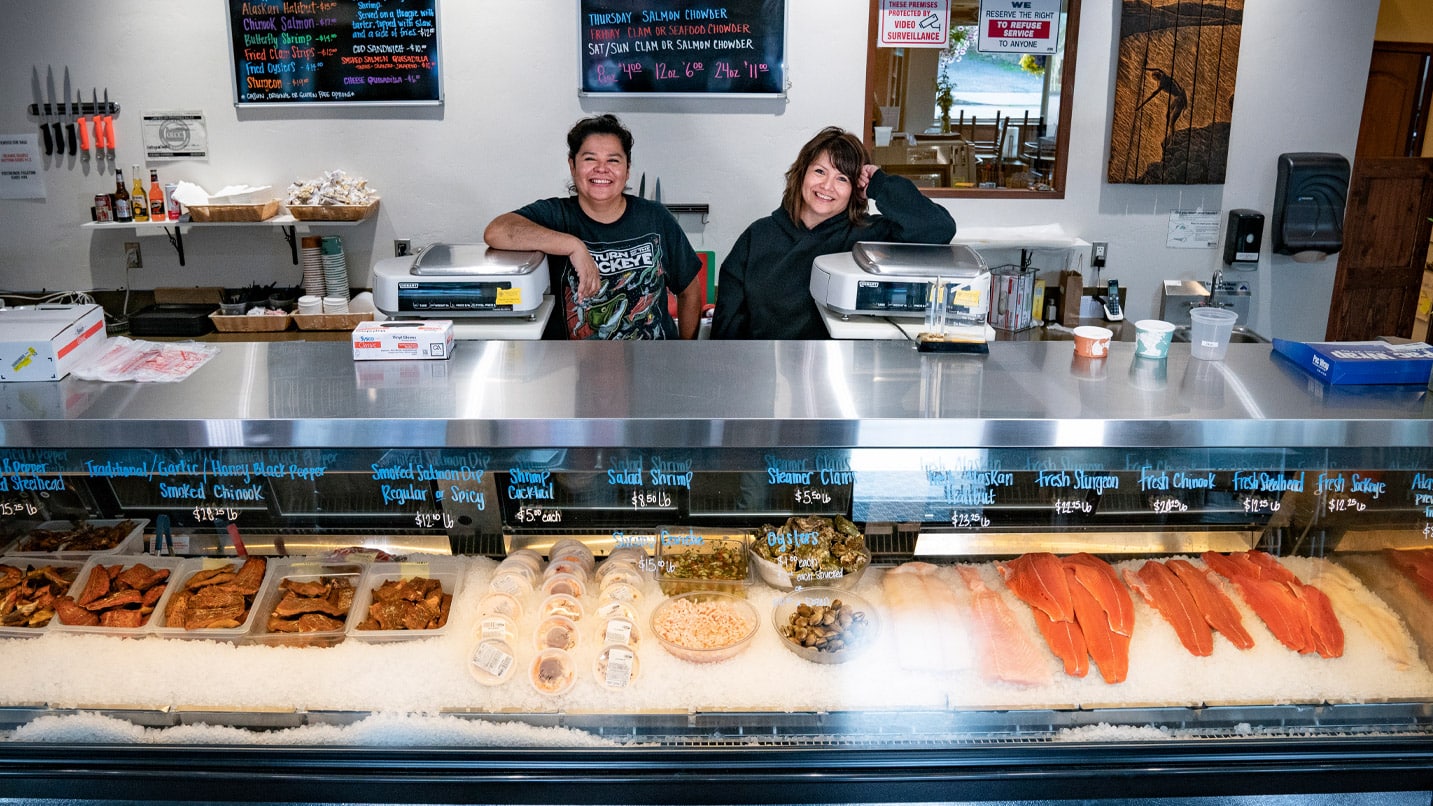
Where and How to Buy Native-Caught Columbia River Salmon
The type of salmon available varies by season and species. Chinook is the first to return, a rich, deep-pink-fleshed favorite typically arriving as early as late May. Spring chinook is followed by sockeye and summer chinook in June and July, then coho salmon and fall chinook in August and September.
Sales stands open in tandem with tribal fishing seasons and can be found from Cascade Locks to Boardman. Sites include the base of Bridge of the Gods and the Brigham Fish Market in Cascade Locks; Wild Columbia Salmon in Hood River; Stanley Rock/Koberg Rest Area (I-84 Exit 66, westbound only); Celilo (I-84 Exit 97); and Preachers Eddy/Rufus (I-84 Exit 110). Look for signs at other areas along the river, too. Most vendors are small family operations, so operating hours and locations vary. For updates about seasonal openings and fish availability, check the commission’s website or call its salmon hotline at 888-289-1855.
Fishers may offer whole-fish — known as “in the round,” it may need to be cleaned before cooking — filets ready for cooking and/or smoked filets ready to eat. Select fish with shiny, firm flesh that springs back to the touch and a mild (not overly “fishy”) smell. On whole fish, look for bright-red gills and clear eyes as signs of freshness.
Don’t be afraid to ask questions or shop different stands to find what you want. Plan to pay with cash, and bring a cooler with ice to ensure your fish stays fresh on the way home. This video has more buying tips.
Salmon inspires many inventive recipes, but its singular flavor needs little adornment. Try filets grilled on a cedar plank or slow-roasted on skewers over a wood fire — similar to the salmon bake that has been savored by tribal families for tens of thousands of years.
